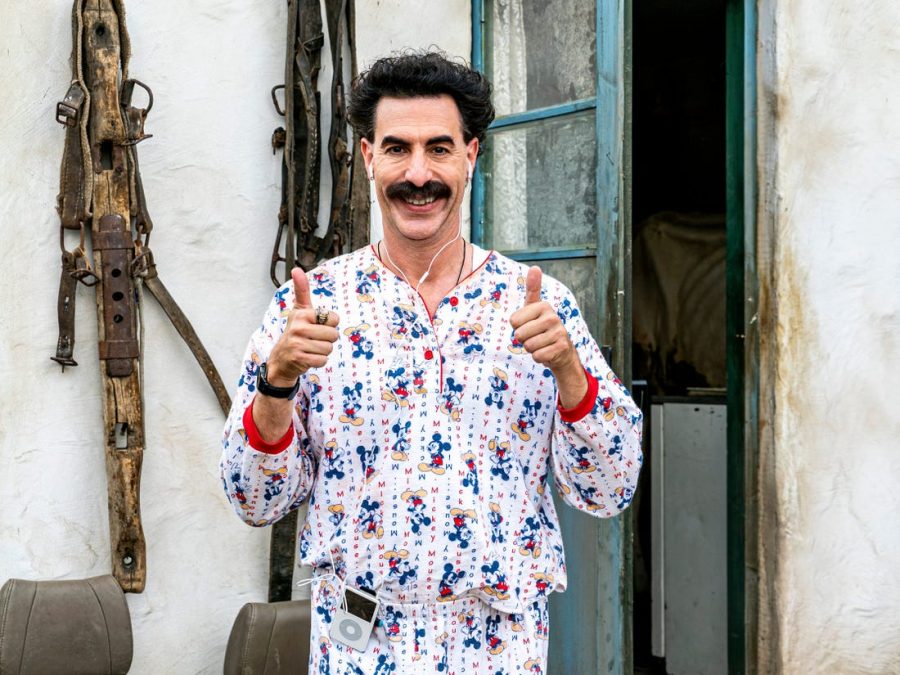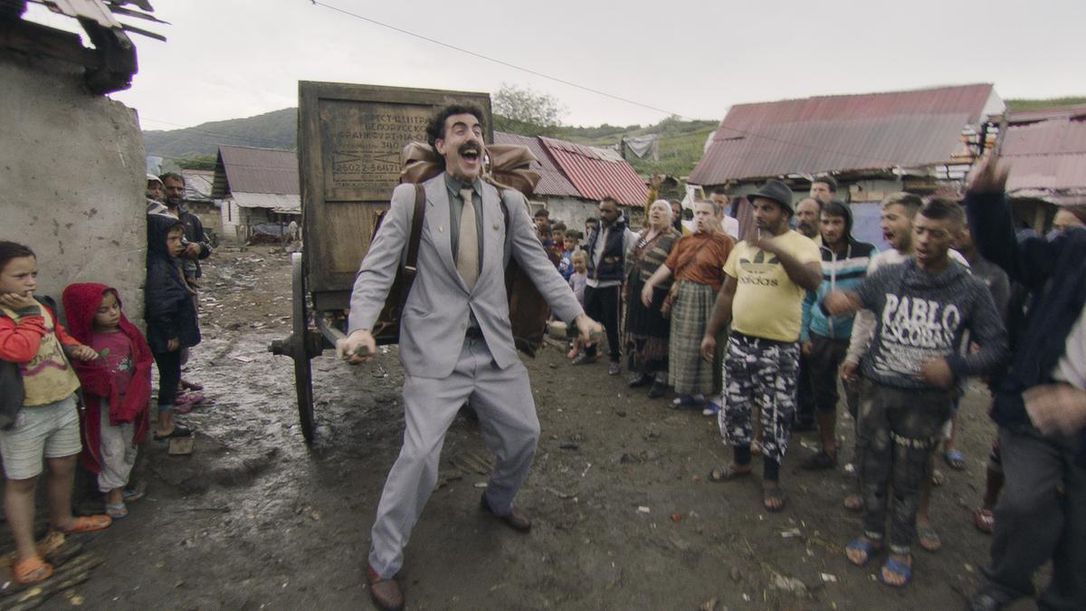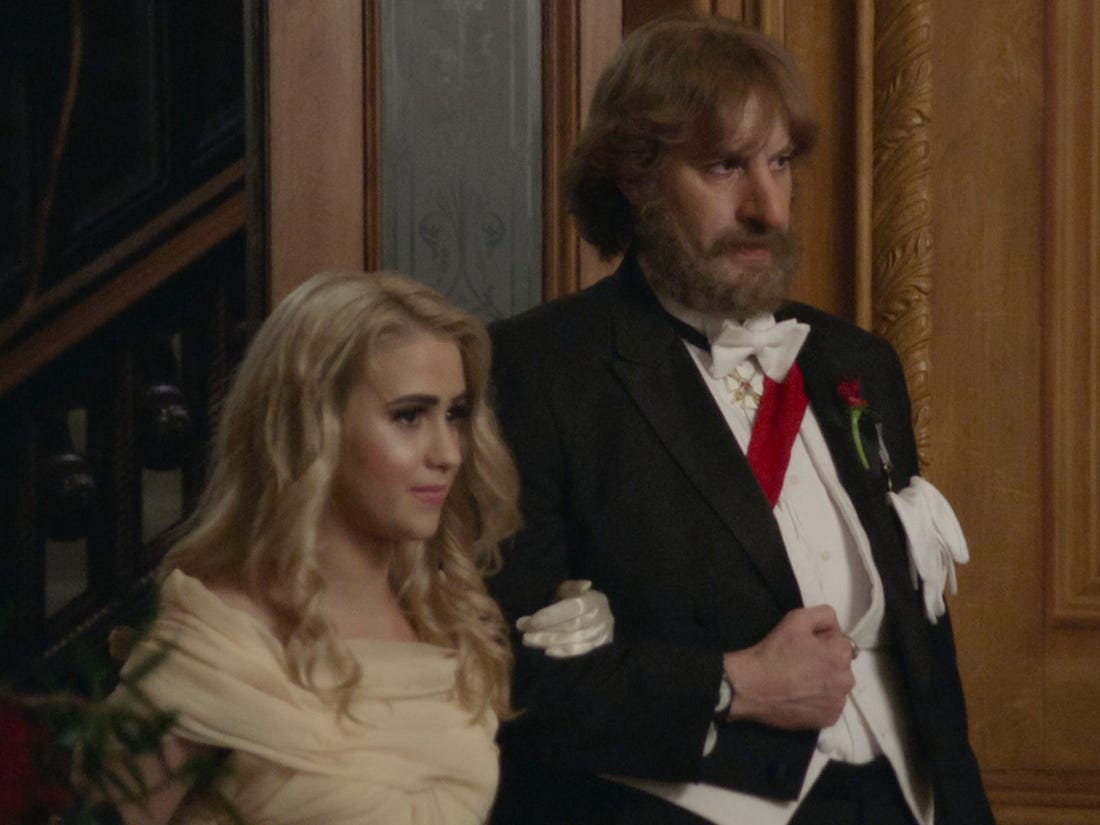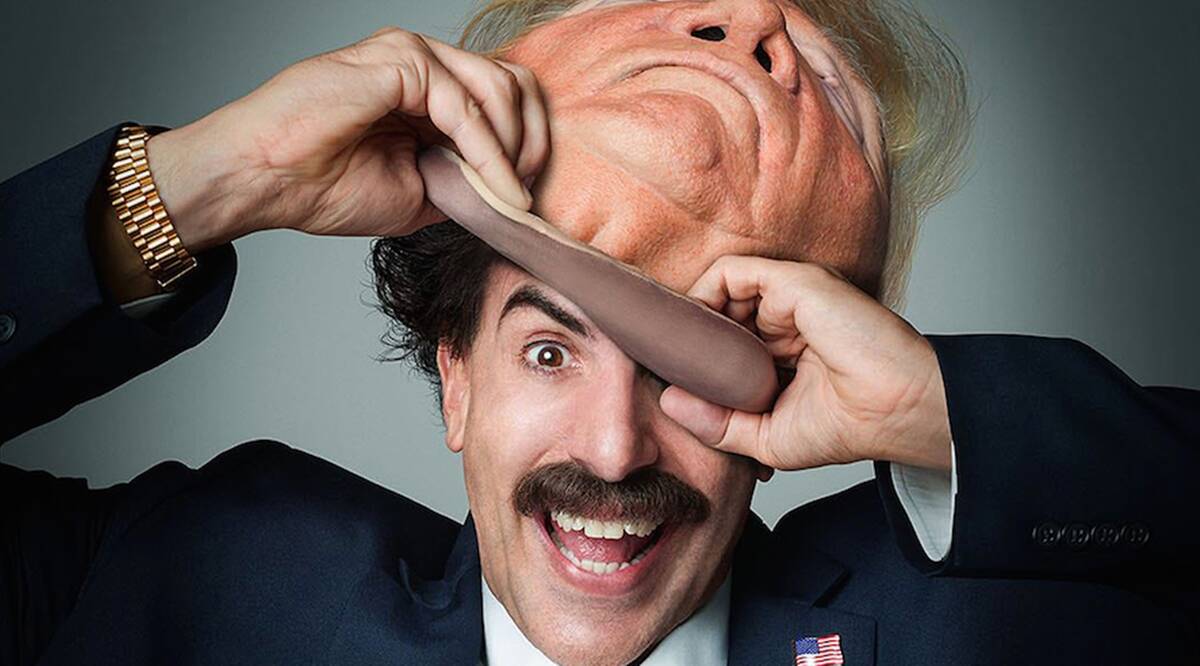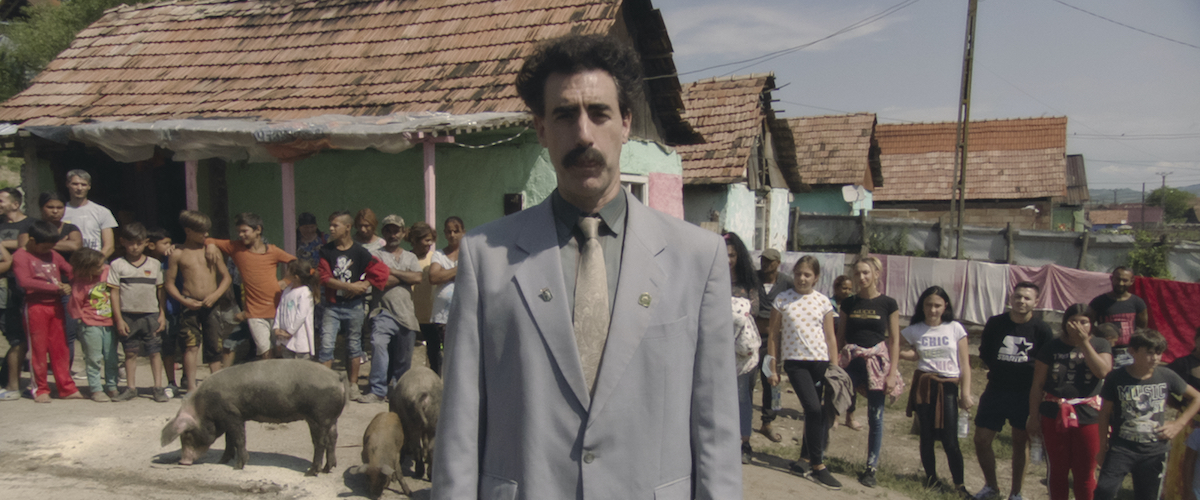Borat: Subsequent Moviefilm Review
Not as gloriously funny as the first one, but more political
November 3, 2020
Fourteen years ago, Borat visited America to “make benefit glorious nation of Kazakhstan.” This meant singing his version of the National Anthem in a southern rodeo, chasing his producer Azamat Bagatov naked in a hotel lobby, and learning how to deliver jokes from a humor coach. “Why not? It’s nice!”, as Borat would say. Actor Sacha Baron Cohen, the creator of Borat, made headlines across the country by using his misogynistic, anti-Semitic, buffoon of a character, to mock and draw attention to America’s view of democracy, and its people. It was a great success! After the first film, Borat became a global celebrity. Now, Sacha Baron Cohen returns as his famous fictional Kazakh journalist, Borat Sagdiyev, to make his “subsequent movie-film”. The character has his four children now: Bilak, Biram, Huey Lewis, and his daughter Tutar. At the start of the new film, Borat was portrayed as an embarrassment to the country and was sentenced to a gulag. But, he gets a second chance to make things right. The new President of the United States, “McDonald” Trump has made great relations with many national leaders, and Kazakhstan wants to be a part of it. Now, the Kazakh journalist has been sent to the “US & A” to deliver Kazakhstan’s number one television-star, Johnny the Monkey to “Vice Premier” and womanizer Mike Pence. But, due to the monkey being eaten, Borat decides to deliver his 15-year old daughter, Tutar, played by Maria Bakalova, as a gesture of goodwill.
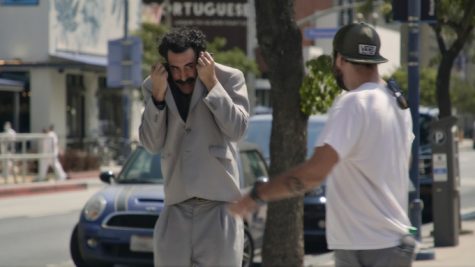
But, everyone recognizes him now, thus Borat resorts to disguising himself as different characters. The ‘movie film’ revolves around the adventures of Borat, who is acting as other characters due to his notoriety. The costumes that Borat disguises himself as are hilarious, especially the President Donald Trump costume he wears to attend the Conservative Political Action Conference or a conservative father buying a baby-cupcake which results in having a conversation with a pro-life clinician.
The film contains controversial material that would shock people if they haven’t seen the first film. During Borat’s travels, he puts himself in a variety of crazy situations including attending a debutante dinner, purchasing a cellphone from a gadget store, and sending fax messages to his Premier at a copy center. Always, Borat exposes the true, and ridiculous views of the people whom Cohen, as Borat, seeks to mock. Audiences new to Borat will be more surprised when they see Borat infiltrate the CPAC as Donald Trump or sing a very prejudiced song called “the Wuhan Flu” at a Washington Gun Rally. Some of these pranks leave viewers gobsmacked, questioning how he got away with it.
Especially for this film, the screenplay focuses on the father-daughter relationship. Tutar, raised in a livestock farm, hasn’t been taught what are the rules of society, or the etiquette of femininity. She is told to believe in a fictitious “rule book” which goes against most modern ideologies, such as women not reading or driving.
One of the heartfelt scenes in the film is when Borat encounters Holocaust survivor Judith Dim Evans. In an attempt at suicide (necessary because he believes he will be executed when he gets home for failing in his mission), Borat dresses up as a Jew, with exaggerated, historically stereotypical features such as a big nose and horns, and goes to a synagogue for the “next mass shooting.” Judith approaches the journalist with kindness and explains that there is no need to be afraid of the Jewish people. Both of them exchange their stories, and Borat comes to a revelation that the Holocaust really happened.
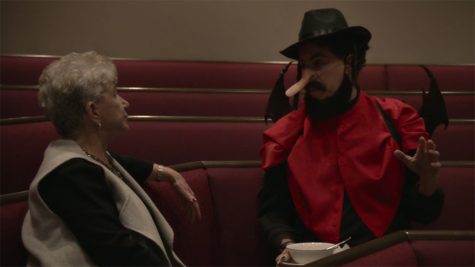
To many audiences, the joke may fly over their heads, especially if you haven’t seen the first film. Borat expresses his anti-semitism in the first film, in which he stays at a Jewish Bed and Breakfast and reports about the “Running of the Jew” (a fictional anti-Semitic take on Spain’s running of the bulls from the first movie, which involves mascots in huge masks with enormous noses and other exaggerated features). But, when meeting Judith, the Kazakh journalist breaks the fourth wall, understanding that it is cruel to have racist views of people. After filming the scene, Sacha Baron Cohen broke character and explained to Evans that the film was a comical satire. Since Judith passed away during the final production of the film, Cohen decided to dedicate the movie in her honor. In an exclusive on Amazon Prime, subscribers can watch a video of Judith’s story and her experience of the Holocaust.
During another scene, Borat stays with two QAnon supporters when the quarantine starts. Jim and Jerry, who live in a cabin away from the city, have completely skewed views of society, thinking that Hillary Clinton drinks the blood of children. When Borat asks which is worse, the Democrat or COVID-19, they respond “the Democrat.”

The highlight of this film would be the last segment: the Rudy Giuliani interview. Before the film’s release, news media began to report about Giuliani’s involvement in late July, which included Cohen dressed up in pink lingerie and fleeing the scene before the police came. Little did we know that this scene would be the most-talked about in the film. Tutar acts as female reporter and gives herself to Giuliani in a last resort to prevent Borat from being executed. Tutar invites Giuliani to the bedroom suite, and he accepts the offer. Giuliani sits down on the bed while Tutar seems to help him take off his microphone. He pats her on the shoulder and exclaims, “You can give me your phone number and address.” Giuliani then appears to put his hands down his pants, the moment that has gotten so much recent press attention.
“She’s 15. She is too old for you!” Borat bursts into the room and confronts Giuliani. The mayor immediately understands that the encounter was planned, and was escorted out by his security. “I had to take off the electronic equipment,” Mr. Giuliani told the hosts of the “Curtis & Juliet Show.” “And when the electronic equipment came off, some of it was in the back and my shirt came a little out, although my clothes were entirely on….I assure you that’s all I was doing.”
In this second film, Borat makes light of what people think and perceive. The world has changed since 2006, and the character still exposes the veracity of what people think of each other, and points at the “real” America. In my opinion, this movie isn’t as funny as the first film. When I saw Borat deliver his signature lines in the beginning of the first film, I was in awe. This type of crude humor isn’t for everyone, but if you can accept it as a satire, Borat has done his job successfully. Cohen explicitly says in a Times interview that he wanted to put out the film before the election as “a reminder to women of who they’re voting for — or who they’re not voting for.” I would call this film, “Borat: Cultural Learnings with Tutar to Make Benefit of Kazakhstan” as both characters uncover the idea that Americans still have a lot to learn from each other as the country is divided with so many different political/economical/social beliefs. My takeaway from this movie is: it is great if you like crude humor, but it isn’t as comically heroic as the first one; it’s more political.
Borat: Subsequent Moviefilm is available on Amazon Prime!
Borat: Cultural Learnings of America for Make Benefit Glorious Nation of Kazakhstan is available on streaming platforms!
Viewer’s discretion is advised!


